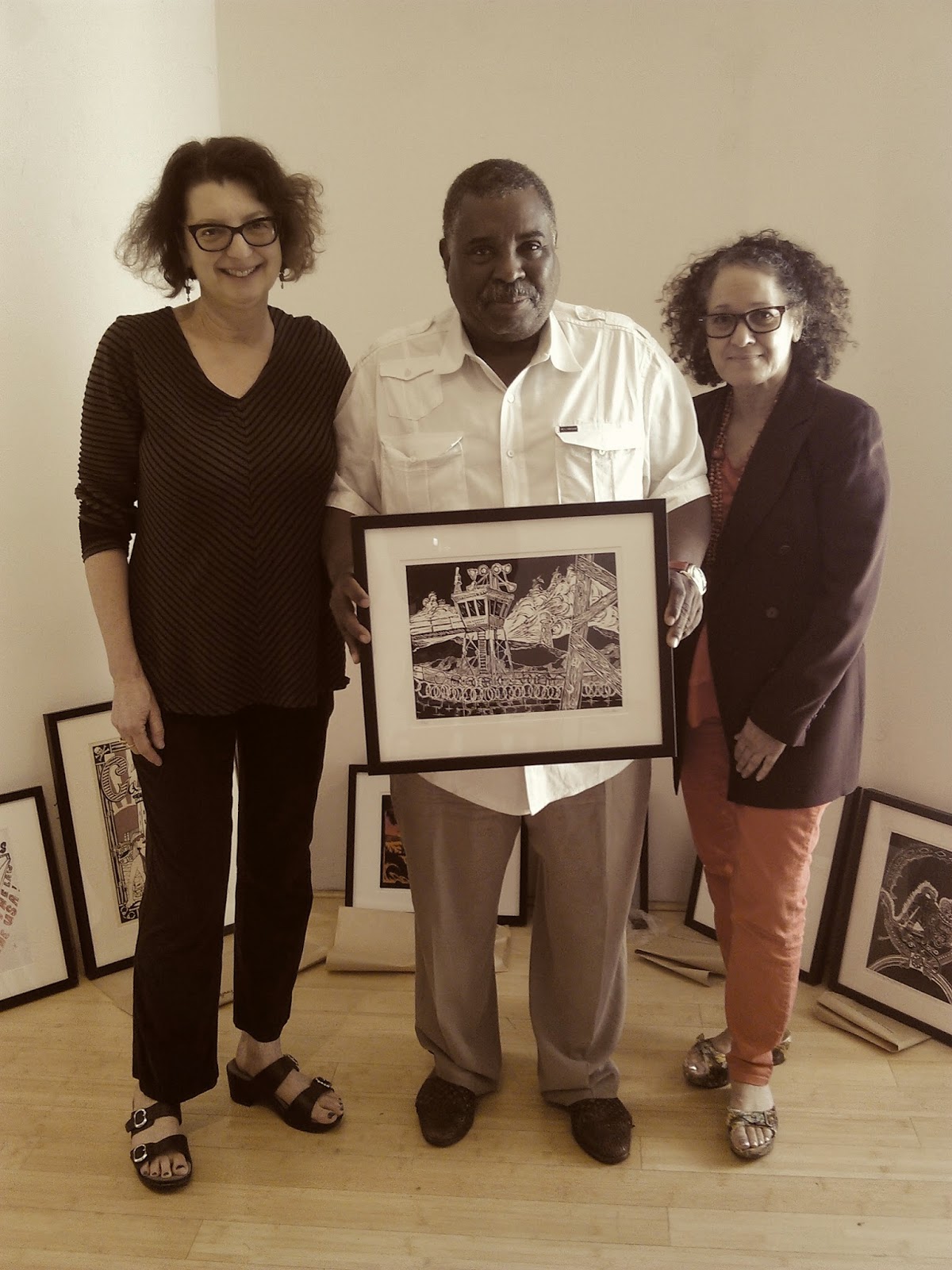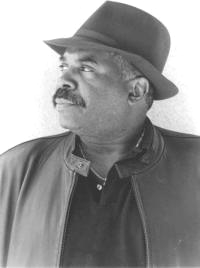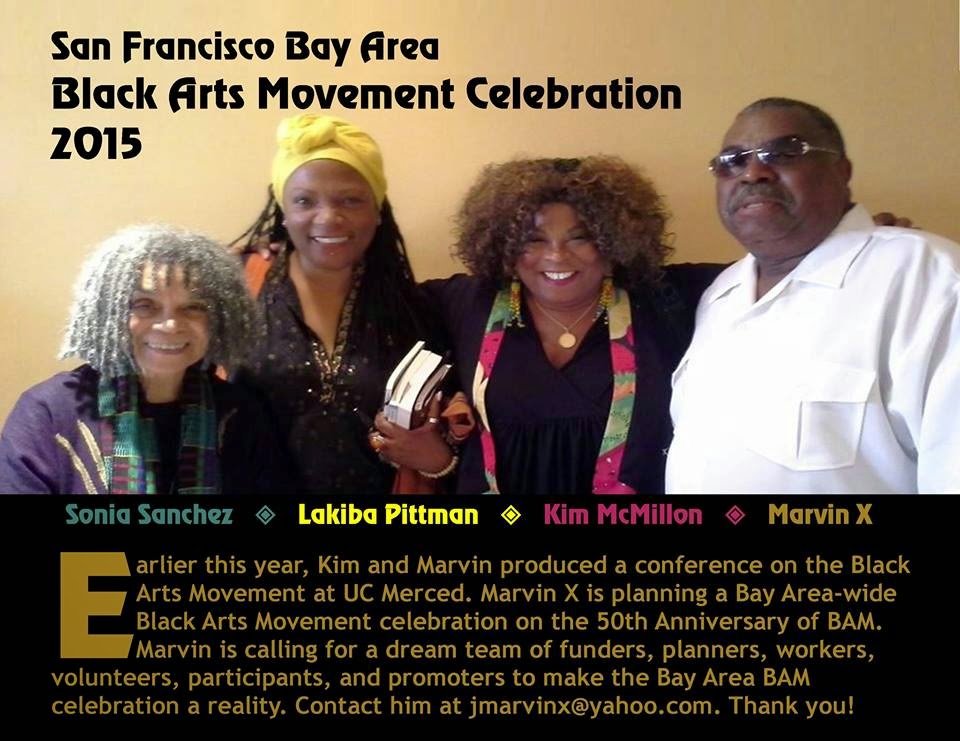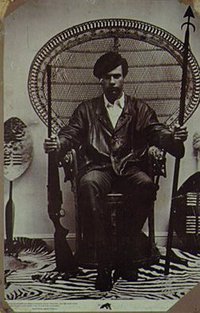Courtesy of Sundance International Film Festival
The Bottom Line
A fine primer that admires the movement more than its leaders.Venue
Sundance Film Festival, Doc Premieres
Director
Stanley NelsonA strong if only occasionally transporting biography of a movement that terrified the establishment in its day,
Stanley Nelson's
The Black Panthers: Vanguard of the Revolution speaks to many former members of the Black Panther Party about what its breed of revolutionary activism felt like at the time. Joining some other recent histories about black Americans fighting powers that are too rarely held accountable to them, the film continues a discussion whose present-day relevance is painfully, increasingly obvious. Straighter in its attitude than
The Black Power Mixtape and covering much more ground than
Free Angela & All Political Prisoners, it does so in a way that will be an easy sell on public TV, where it's likely to find most of its initial audience before a long and useful life on video.
Beginning in the group's birthplace of Oakland, California, the doc points out how the persecution of the civil rights era had a different flavor in coastal cities than in the South. Here, we're told, thuggish police "might not have called you n—r, but they treated you the same." We're introduced to the young
Huey P. Newton, who realized that it was legal to carry loaded guns in public and understood that doing so in the vicinity of police interacting with Oakland's black population would draw more attention to racial justice issues than a million printed fliers. He and
Bobby Seale organized the party, which began with a focus on militancy but soon launched major charitable programs, including a famous free-breakfast effort that fed children 20,000 meals a week.
Drama was never in short supply with the Panthers, and Newton's arrest early in their existence provided a rallying cry that was (like their fondness for calling police "pigs") taken up by white college students and other left-leaning groups. While he shows the power of the "Free Huey" slogan, Nelson isn't eager to investigate it; he tells us almost nothing about the incident that led to Newton's imprisonment (he was accused of killing a policeman), nor does he give us any way of guessing whether it was just or unjust.
The omission of such significant details is puzzling given that Nelson soon enough proves willing to show the group's leaders in an unfavorable light. We watch in some detail as their intellectual star,
Eldridge Cleaver, goes off the deep end following an armed standoff, fleeing to Algeria and eventually fracturing the party. And near the end, we briefly hear of Newton's descent into drugs and erratic, criminal behavior. It's tempting to conclude that the film is willing to be frank about the problems party figures caused themselves and each other, but the doc wants few shades of gray when it comes to antagonism between Panthers and the police.
The film's most involving bit of storytelling comes when the villainy of law enforcement is in no doubt. After detailing
J. Edgar Hoover's fervor to destroy the group with COINTELPRO and dirty tricks, it introduces the tremendously charismatic
Fred Hampton, who in 1969 seemed poised to emerge as the kind of "black messiah" Hoover feared. Just as he was starting to build inspiring alliances between Panthers and activists in Latino and poor white communities, Hampton was killed in an FBI-engineered police raid that begs to be called a political assassination.
Straight history is not the whole point here, as Nelson enthusiastically conjures a sense of what it felt like to
be a Panther and to be a young black person inspired by them. Alongside historians, we hear from many surviving party members, including
Jamal Joseph,
Kathleen Cleaver, and
William Calhoun. (The absence of Seale, the most famous surviving Panther, is not explained.) Adding a bounty of excellent archival photographs and some good political soul on the soundtrack, the movie makes unnecessary one member's happy recollection that "we had a swagger."
Production company: Firelight MediaDirector: Stanley NelsonProducer: Laurens GrantDirectors of photography: Antonio Rossi, Rick ButlerEditor: Aljernon TunsilMusic: Tom PhillipsNo rating, 114 minutesMARVIN X INTERVIEWED FOR DOCUMENTARY ON BLACK PANTHERS AND THE BLACK ARTS MOVEMENT
Marvin X concluded his Revolution on the Rocks Book Tour 2012 with a lunch interview with producer Laurens Grant who is working on a documentary on the Black Panther Party, directed by Stanley Nelson. Marvin X has urged her to include how the Black Panther Party in particular and the liberation movement in general was influenced by the Black Arts Movement. According to Marvin X, there was cross fertilization between the Nation of Islam, Black Panthers, Black Arts Movement and the Black Student Movement that led to Black Studies.
Bobby Seale and Marvin X at the Joyce
Gordon Gallery Black History Celebration, 2012
![]()
No aspect of the Black Consciousness Movement sprang up in isolation. We cannot discuss the Black Panthers without discussing the African American Association, led by Donald Warden, aka Khalid Abdullah Tariq Al Mansour. From the AAA's influence came the Panthers and the establishment of Black Studies at Oakland's Merritt College, even before the violent strike for Black Studies at San Francisco State College, now university.
And would the students at Merritt and San Francisco State have been motivated without the West Coast Black Arts Movement, e.g., Bobby Seale performed in Marvin X's second play Come Next Summer before joining the BPP. Bobby played the role of a young black man in search of revolutionary consciousness.
At San Francisco State College, LeRoi Jones, aka Amiri Baraka's Communications Project enrolled student actors and playwrights such as Jimmy Garrett, Benny Stewart, George Murray, Jo Ann Mitchell, Elleadar Barnes, et al., who went on to participate in the Black Panther Party after BAM consciousness.
At San Francisco State College, now University, Marvin X's first play, Flowers for the Trashman, produced by the Drama Department, 1965, ushered in Black Arts West Theatre, 1966, with X and playwright Ed Bullins. Danny Glover performed in BAW. BAW came under the influence of the Nation of Islam will key players joining the NOI, i.e., Marvin X, Duncan X, Hillary X and Ethna X.
![]()
Upon his release from prison, 1967, Eldridge Cleaver hooked up with Marvin X and they established the Black House, a political/cultural center, along with Ethna X, Ed Bullins and Willie Dale. Again the Muslim influence: Marvin X an d BAW guru and former inmate with Eldridge, Alonzo Batin, forced Eldridge Cleaver out of his white woman's house (Beverly Axelrod, the attorney who took his manuscript Soul on Ice out of Soledad Prison and whom Eldridge promised to marry, who also contracted a portion of royalties from Soul on Ice and won by default while Eldridge was exiled in Algeria). Eldridge died poor while his book is still an international bestseller as we write! You Marvin X eventually introduced Eldridge Cleaver to Bobby Seale and Huey Newton, Marvin's companions from Merritt College.
But just as the Nation of Islam recruited members of the Black Arts West Theatre, Marvin X would later recruit for the NOI. His biggest fish was no doubt Nadar Ali or Bobby Jones who Elijah Muhammad put over the fish import business.
Islam had a significant role on the East Coast Black Panther Party and the genre Muslim American literature begins with Marvin X and the BAM writers, e.g., Sonia Sanchez, Amiri Baraka, Askia Muhammad Toure, et al.
![]()
Marvin X and his mentor and associate, Master Sun Ra,outside Marvin's Black Educational Theatre on O'farrel Street, between Fillmore and Webster, 1972. Sun Ra and Marvin X were both teaching Black Studies at UC Berkeley. They produced a five hour concert without intermission and a cast of fifty at San Francisco's Harding theatre on Divisadero St. Eldridge and Alprentice Bunchy Carter, his prison buddy and later leader of the Los Angeles Black Panther Party, murdered on the campus of UCLA, along with John Huggins by members of the US organization, headed by Ron Karenga.
Huey P. Newton in wicker chair, rug, shield, spear; these items came from Eldridge Cleaver's room at Beverly Axelrod's house. Marvin X and Alonzo Batin (BAM guru) moved Eldridge from Axelrod's White House to the Black House on Broderick St., San Francisco.
Marvin X at Fresno State College/now University. He was removed as lecturer on orders of
Governor Ronald Reagan who also removed Angela Davis from UCLA the same year, 1969.
My Friend the Devil, Marvin's memoir of Eldridge Cleaver.
Eldridge Cleaver and Marvin X outside the house where the Panthers had a shoot out with the OPD. Little Bobby Hutton was murdered by OPD, Cleaver wounded and later fled to exile. When he returned as a Born Again Christian, Marvin X organized his ministry. photo Muhammad Al Kareem See My Friend the Devil, a memoir of Eldridge Cleaver by Marvin X, Black Bird Press, Berkeley, 2009. Also, Somethin' Proper, the autobiography of a North American African Poet, Marvin X, Black Bird Press, 1998. Somethin' Proper came off the press the day Eldridge Cleaver made his transition to the ancestors, May 1, 1998. Marvin X performed the memorial rites in Oakland. Kathleen and daughter Joju attended the memorial. Kathleen said, "Marvin, the memorial was great, but there were just too many Muslims!" Alas, their son is Ahmed Maceo Eldridge Cleaver, a Sunni Muslim!



















































































